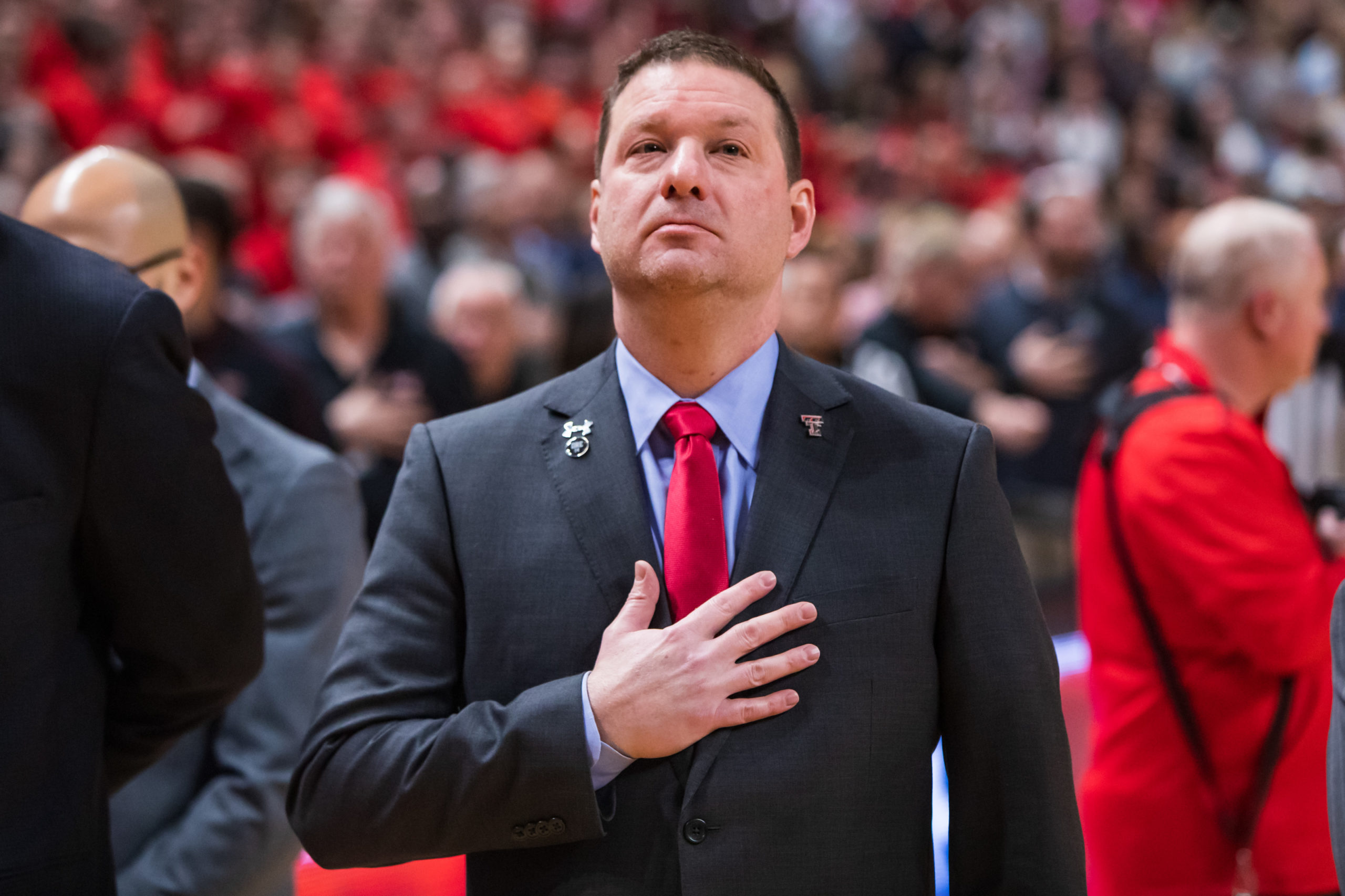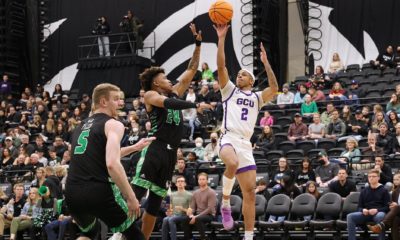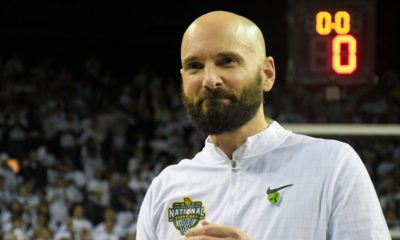
Photo cc: Photo by John Weast/Getty Images
There is no doubt that Chris Beard has built an elite basketball program on the South Plains. It is thus a program that elite talents want to come to play for. However, this presents a new set of issues as Texas Tech now finds itself needing to manage the astronomical expectations that the bluest of blue-chip talents often arrive within their own minds and/or within their respective circles of friends and family. Recently, Tech has landed three of their top four recruits of all-time (according to 247 sports), that only a few short years ago never would have considered playing for the Red Raiders. This served as validation of the status of Coach Beard’s program. Jahmi’us Ramsey somewhat lived up to the hype and made his way to the NBA, but perhaps should have stayed one more year. Unfortunately, the other two players never found success here, as both Khavon Moore and Nimari Burnett departed well before becoming major contributors at Tech (or presumably from their perspective, because they weren’t and felt that they should have been). Not to single out these players for criticism, they are just the notable examples here at Tech of an issue that is fairly common with potential one-and-done talents.
The structure of the system is the root cause of the issue. Talented HS Seniors hear incessant projections of where they’ll go in a future NBA draft before they’ve even stepped foot on a college campus. This understandably sets their expectations at that level and has the player and everyone around them counting NBA dollars that are expected to rain down on them at a defined date. Therefore, any deviation from this path is viewed as an unacceptable problem impacting their future pocketbook and/or delaying the arrival of the payday. For players projected to be one-and-done talents, watching that very short window close often comes as a reality they don’t want to accept. In the case of Nimari Burnett, it appeared he simply needed a little time to develop. Burnett arrived as an elite defender, but the rest of his game was still raw, as is the case with many true Freshmen. There is little doubt as to Nimari’s talent and overall promise, but he wasn’t there yet to immediately be a full-time starter on a very strong roster.
Chris Beard isn’t the type to play favorites. Everything is earned, and the best players will play. Admittedly, there were moments when a few (including myself) thought he might deserve a few more minutes than he was getting, but it is unlikely that getting the 7th most minutes instead of the 8th most on the roster would have made much of a difference in terms of satisfying the lofty expectations. Make no mistake, Texas Tech basketball is a power because of player development, not because it just inserts All-American talent year after year like many of the blue-blood programs do. Beard incessantly talks of the process, and in his mind, there isn’t a player that doesn’t need to develop. Not to generalize too much, but the truly elite recruits are often prone to thinking they’re already NBA ready, largely because that’s how they’re treated by the system and those around them. This can thus make things tricky, as trying to convince a player who is an elite talent that they still need to develop can fall a bit on deaf ears.
Many of the blue-blood programs structure their programs around keeping talented rosters of players who can’t all start happy in one way or another. Most sadly engage in some form of pay-for-play via boosters, apparel companies, benefits channeled through family members, etc. It’s understandable (if a bit deplorable) as a way to compete against the monetary appeal of the NBA, but it doesn’t appear to be a tactic the Red Raiders are using. This, in combination with Coach Beard’s expectation that players work hard to improve regardless of skill level, makes keeping the truly elite talents around tough, especially if said players need more development than they care to admit or aren’t patient/driven enough to delay their dreams, even for a short while. The question then becomes, is it actually better for this Texas Tech program to have All-Americans?
It’s debatable. Beard, when asked a question to this effect, replied as one would expect with a tactful answer referencing that the program expects to operate at the highest level with the best players. In reality, though, a four-star player who typically isn’t much of a talent downgrade from the All-Americans is inherently more able to accept that they still have room to improve because they haven’t been declared among the very top-end talents yet. Obviously, there are exceptions both ways, but it isn’t difficult to surmise that players who don’t come in as heralded are often more coachable. As such, the sweet spot in Texas Tech basketball recruiting may well be at the four-star level. Such players seem more likely to accept their need to develop and to be patent as they do. Even in the best scenario where a five-star player arrives as advertised and becomes a lottery pick the following year, in terms of college, the program only gets one year of that player. Weighing that against two, three, or even four years with a slightly-less-heralded player makes it questionable, especially considering the increased potential for a hasty departure of an All-American when adversity strikes.
A look at the program in Austin further supports this. The Longhorns have consistently been loaded with talent over the past several decades with little to show for it. Players repeatedly utilized the program’s high exposure as merely a one-year showcase to get them to the next level and most left the program far before they should have. Maintaining consistency with such a high level of roster turnover year after year proved difficult, and it visibly impacted the UT program in negative ways. However, they’re currently reaping the benefits of being knocked down a peg or two, because Smart’s roster is finally filled with some players who stuck around and improved, and now they have a top-five program. As Tech is presently able to recruit at or above this level, there is much to be learned from how it has proven far better for UT’s program to have several years with players like Matt Coleman, Courtney Ramey, Jericho Sims, etc. than one year with a Myles Turner, Jarrett Allen, or Mo Bamba.
One final tidbit worth mentioning is that transfers work both ways. While it undeniably hurts to lose players like Burnett and Moore, Tech’s program is happy to welcome players like Mac McClung, Tariq Owens, Matt Mooney, etc. It’s hypocritical to trash outgoing players and gladly accept high-profile transfers into the program, so that should be noted and avoided. Such is the nature of modern basketball, but it remains worth considering how best Tech’s program should handle recruiting as it continues its ascent into unfamiliar territory. Ideally, Beard is able to identify the elite talent that still comes in willing to admit their own faults and work on addressing them, but that’s not an easy task. The Red Raiders are spoiled now with the “first-world problems” of basketball, yet should still consider how to adapt to the transition. It’s impossible to make everyone happy. However, retaining and developing talent will be key in keeping Texas Tech among the top programs, so here’s hoping Beard is able to toe that line of bringing in the top athletes that will still embrace the program’s culture.


















